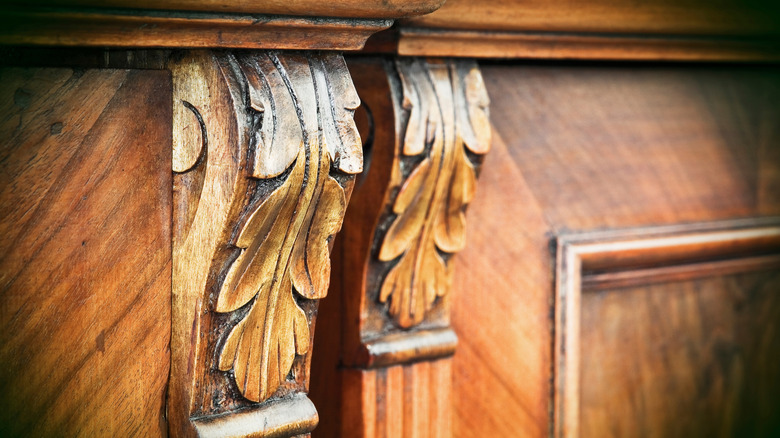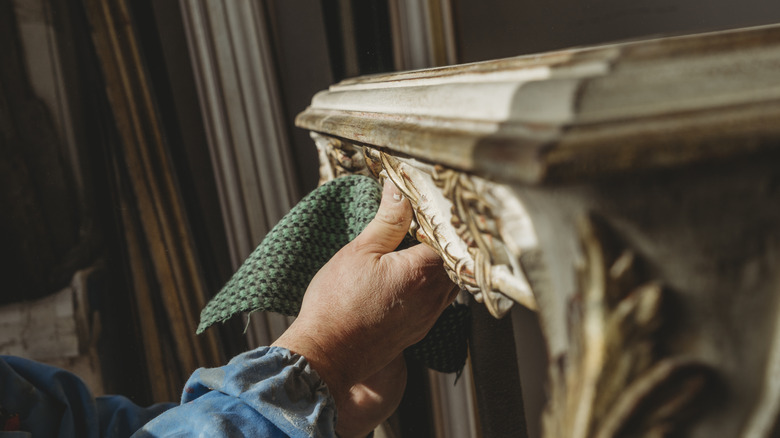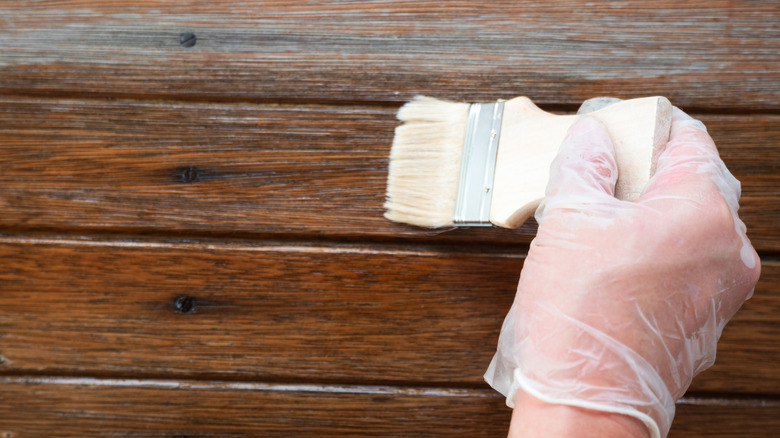The Best Trick For Repairing Missing Details On Wood Furniture
We may receive a commission on purchases made from links.
Real wood furniture is sturdy, durable, and incredibly stunning. It's a favorite among many homeowners for these reasons, but there's one downside that can make these pieces a bit high maintenance — the detailing on wood furniture can wear away over time. If you notice missing details on your own pieces, there's a trick you can use to repair them. Christophe Pourny, owner of Christophe Pourny Ltd. and author of "The Furniture Bible," explained that you could either carve the detail back into place, or replace it with composite materials. Use this advice when refurbishing your wooden furniture so that it's just like new again.
"Replacing missing wood elements from a furniture, frame, moldings or sculpture is a classic restoration process," Pourny explained while speaking exclusively to House Digest. "The high end and proper way to do it is to carve the missing element from another piece of wood from the same essence as the substrate, but it is not always possible, and it is totally acceptable for regular or everyday pieces missing parts to be replaced with composite materials." If you have DIY woodworking project experience and want to carve the missing detail yourself, feel free! If not, you can use a silicone casting product and some epoxy for a more beginner-friendly restoration trick.
How to use this trick to restore detailing on wood furniture
An Instagram video posted by @secondwindvtg shows how this trick works. Start out by coating the detailing with an oil product to prevent the casting material from sticking to the surface. While speaking exclusively to House Digest, Pourny shared that he recommends using mineral oil for this step. Next, use a silicone casting product to create your mold over the detailing. While the Instagram video uses hot glue, Pourny advises against this because it poses too much risk to the wood.
You will then use epoxy to fill the mold and create the missing detail. However, when shopping for the epoxy, you need to ensure that the product you select was designed to use for casting. Epoxy that can only be used as a filler will not work for this project, according to Pourny. You should be able to find the right type of epoxy on Amazon or at your local craft store. The Puduo Epoxy Resin Kit is worth considering since it's suitable for casting.
Believe it or not, you can detail epoxy much like wood. "If the missing piece happens to be too detailed for a cast, or if the cast did not work perfectly or if you simply want to add your touch, it is totally possible to detail the epoxy cast with fine tools, spatulas, toothpicks or more professionally, some dental tools," the expert explained. Once the epoxy dries solid within the mold, pop it out and glue it to the matching damaged section of wood detailing on your furniture. Lastly, paint the piece you glued on.
Add finishing touches to your restored wood detailing
You will need to ensure the finish of the detailing matches the surrounding material once you're done repairing your wood furniture with this trick. This will help make the restored area less detectable. Pourny shared a few options for products you can use to complete this step. "Acrylic paints and stains are perfectly fine," he explained while speaking exclusively to House Digest. "I prefer to use oil based colors as their drying time is slower and [they] allow [for] more corrections and touch ups, [which is] essential when you try to match something."
Pourny also explained why he is a fan of using glazes to color and finish a cast when restoring missing parts. "Added on top of a solid color, glazes being semi transparent add depth and nuances when matching wood," the expert revealed. You should be able to find the recommended products at your local craft store or online. Now that you understand the steps of this easy wood detailing repair trick, consider using it to revive any old wooden furniture pieces you have at home.


